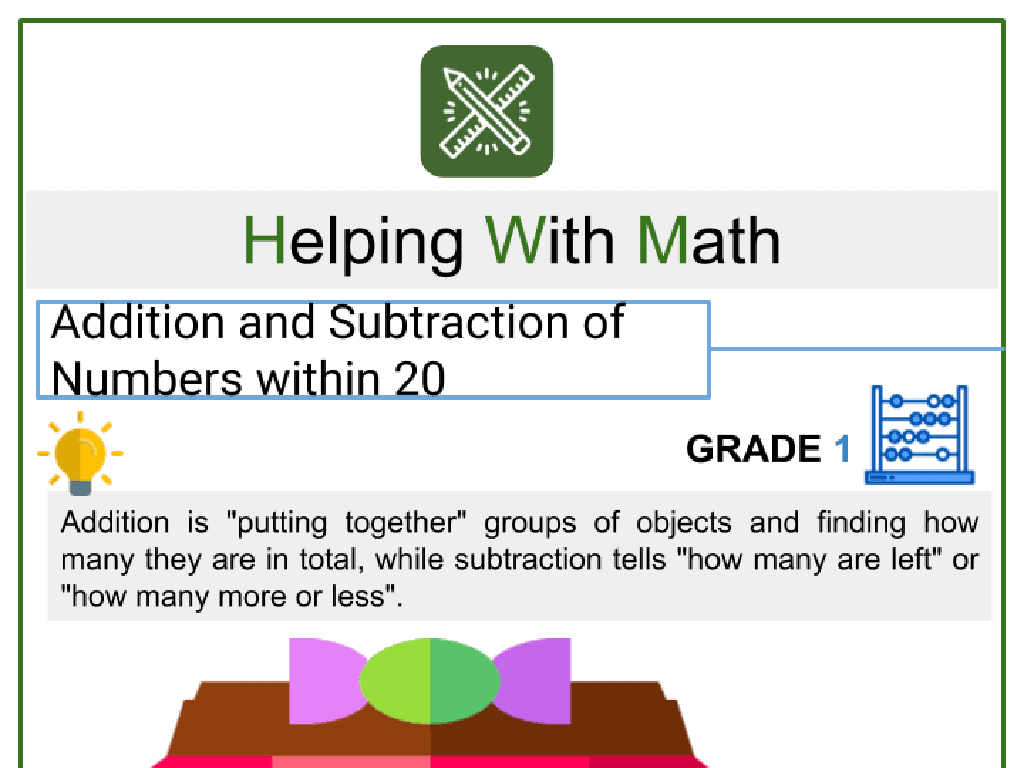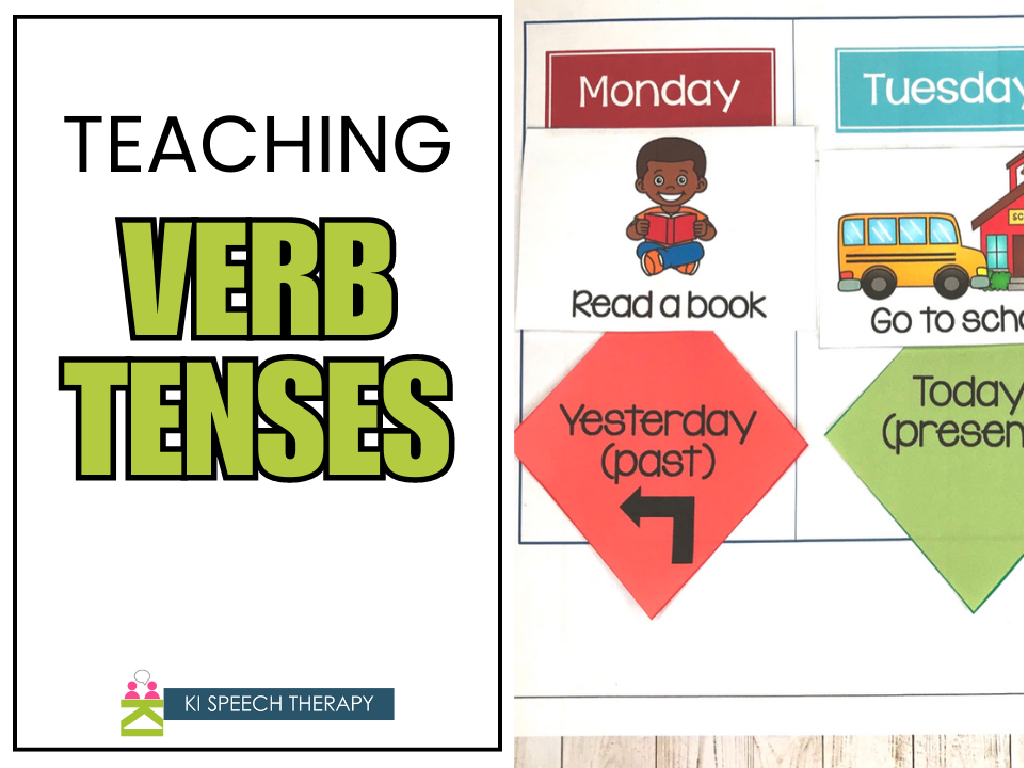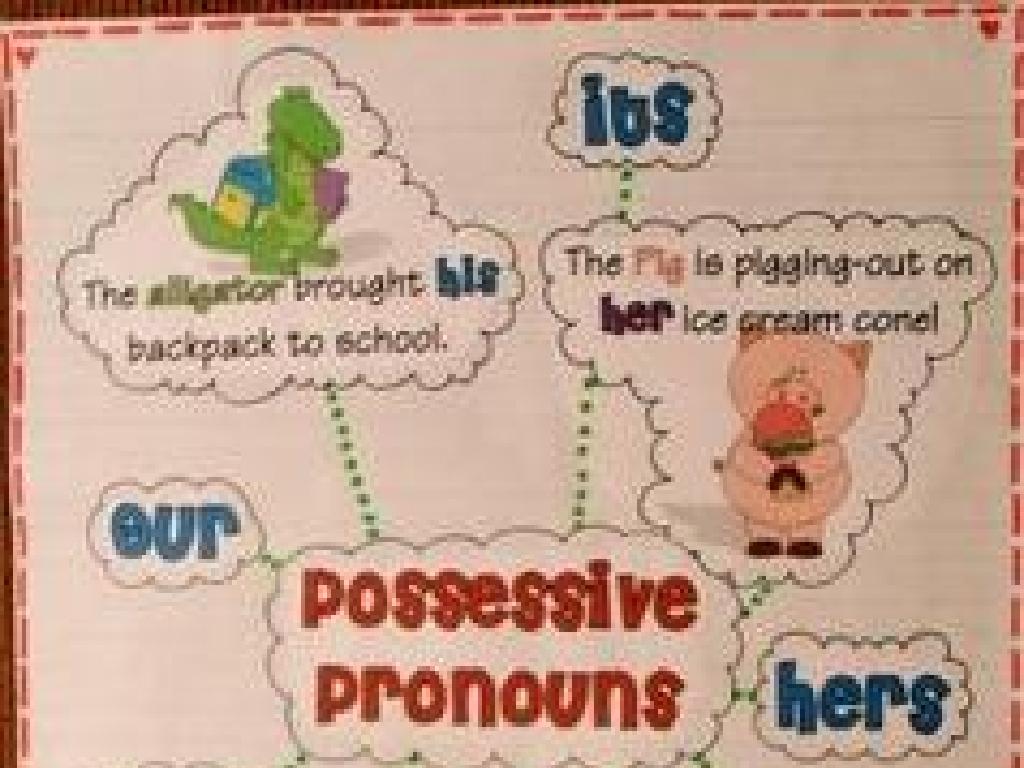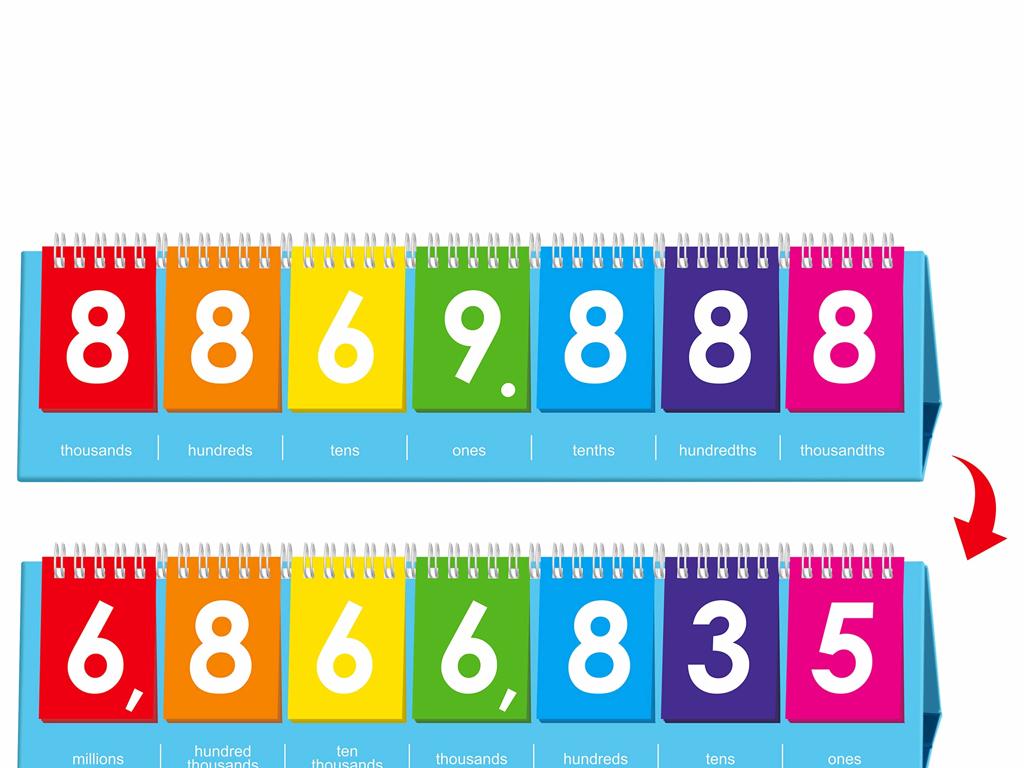Divisibility Rules: Word Problems
Subject: Math
Grade: Fifth grade
Topic: Factors, Multiples, And Divisibility
Please LOG IN to download the presentation. Access is available to registered users only.
View More Content
Welcome to Divisibility!: Today’s Adventure
– Discovering divisibility rules
– Spotting numbers that divide evenly
– Numbers divide evenly if there’s no remainder
– Divisibility rules as math shortcuts
– These rules help us quickly determine factors
– Applying rules to word problems
– Use rules to solve real-world math problems
|
This slide introduces the concept of divisibility rules to the students, which are a set of guidelines that help determine whether a number is divisible by another without actually performing the division. Explain that divisibility rules are like shortcuts that make math easier and faster, especially when dealing with large numbers. Emphasize the practicality of these rules in solving word problems and how they can be applied in everyday situations. Encourage students to think of divisibility rules as tools in their math toolbox. Provide examples of divisibility, such as determining if a number is divisible by 2, 5, or 10, and relate this to real-life scenarios like sharing equally among friends or buying items in groups.
Understanding Divisibility
– What does ‘divisible’ mean?
– If a number divides evenly into another, it’s divisible.
– Examples of divisible numbers
– 15 is divisible by 3 and 5, 10 by 2 and 5.
– Rules for divisibility by 2, 3, 5
– Even numbers are divisible by 2, numbers with sum of digits divisible by 3 or 5 are divisible by 3 or 5 respectively.
– Exploring 9 and 10 divisibility
– If a number ends in 0, it’s divisible by 10; sum of digits divisible by 9 means divisible by 9.
|
This slide introduces the concept of divisibility, which is fundamental to understanding factors and multiples. Start by explaining that divisibility means one number can be divided by another without leaving any remainder. Provide clear examples to illustrate this concept. Then, present the basic divisibility rules for 2, 3, 5, 9, and 10, which are easy to remember and apply. For instance, a number is divisible by 2 if it’s even, by 3 if the sum of its digits is divisible by 3, by 5 if it ends in 5 or 0, by 9 if the sum of its digits is divisible by 9, and by 10 if it ends in 0. Encourage students to use these rules to solve word problems and to check their work when finding factors of numbers.
Divisibility by 2: Even Numbers
– Divisibility rule for 2
– A number is divisible by 2 if its last digit is even
– Even numbers are divisible by 2
– Examples: 4, 8, 12, 16
– 4 (2×2), 8 (2×4), 12 (2×6), 16 (2×8) show the rule
– Practice finding divisible numbers
– Let’s list even numbers and check divisibility
|
This slide introduces the concept of divisibility, specifically focusing on the rule for the number 2. The key takeaway for students is that even numbers are divisible by 2, which can be easily identified by looking at the last digit of a number. Provide examples of even numbers and explain that if the last digit is 0, 2, 4, 6, or 8, the number is divisible by 2. Encourage students to practice with a list of numbers to identify which are divisible by 2. This activity will help solidify their understanding of the concept and prepare them for more complex divisibility rules.
Divisibility by 3: Word Problems
– Rule for divisibility by 3
– If a number’s digits add up to a multiple of 3, it’s divisible by 3
– Sum digits to check divisibility
– Example: 123 is divisible by 3
– Add 1+2+3 to get 6, which is divisible by 3, so 123 is divisible by 3
– Practice with your own numbers
– Try with numbers like 156, 210, and 333
|
This slide introduces the rule for divisibility by 3, which is a fundamental concept for understanding factors and multiples. The rule is simple: if the sum of the digits of a number is divisible by 3, then the number itself is divisible by 3. Provide an example with the number 123 to illustrate this rule. After explaining, encourage students to practice with more examples, such as 156 (1+5+6=12, divisible by 3), 210 (2+1+0=3, divisible by 3), and 333 (3+3+3=9, divisible by 3). This activity will help solidify their understanding and prepare them for more complex word problems involving divisibility.
Divisibility by 5: Rule and Examples
– Rule for divisibility by 5
– Ends in 0 or 5? It’s divisible by 5!
– Examples: 20, 35, 50
– Find numbers divisible by 5
– Look around, like pages in a book or house numbers
– Practice with real-world examples
– Use items like coins or pencils to group by 5s
|
This slide introduces the simple rule for determining if a number is divisible by 5, which is a foundational concept in understanding divisibility. The rule is straightforward and easy to remember for fifth graders: if a number ends in 0 or 5, it can be divided by 5 without leaving a remainder. Provide clear examples such as 20, 35, and 50 to illustrate the rule. Encourage students to find and share examples of numbers divisible by 5 from their surroundings, reinforcing the concept with tangible, relatable objects. This activity not only helps with understanding divisibility but also with observation and critical thinking skills. In the notes, include suggestions for the teacher on how to facilitate this activity, such as using classroom objects or discussing numbers found in the students’ homes or on their way to school.
Divisibility by 9 and 10
– Rule for divisibility by 9
– Add all digits; if sum is divisible by 9, so is the number
– Rule for divisibility by 10
– If a number’s last digit is 0, it’s divisible by 10
– Examples using both rules
– 1233 is divisible by 9 because 1+2+3+3=9, which is divisible by 9
– Practice problems
– 80 is divisible by 10 as it ends with a 0
|
This slide introduces students to the divisibility rules for 9 and 10. For divisibility by 9, teach students to add up all the digits in the number. If the resulting sum is divisible by 9, then the original number is also divisible by 9. For divisibility by 10, the rule is simpler; if the number ends in 0, it is divisible by 10. Provide clear examples for both rules, such as 1233 for divisibility by 9 and 80 for divisibility by 10. After explaining the rules and examples, engage the class with practice problems to solidify their understanding. Encourage students to work on these problems individually or in groups and share their solutions with the class.
Divisibility in Real-World Problems
– Apply divisibility to solve problems
– Use rules to see if numbers can be divided without remainders
– Use clues to pick divisibility rules
– Look for keywords like ‘evenly divided’ or ‘without leftovers’
– Example: Sharing candies evenly
– If 24 candies are shared among 4 friends, how many does each get?
– Group activity: Solve word problems
– Work in groups to apply rules to new problems and explain your reasoning
|
This slide aims to help students apply divisibility rules to real-world scenarios. Start by explaining how these rules can simplify complex problems by determining if numbers can be divided evenly. Highlight the importance of looking for specific clues within word problems that suggest which divisibility rule to use. Work through an example problem as a class, such as dividing candies among friends, to demonstrate the practical application of these rules. Finally, engage students in a group activity where they solve word problems using divisibility rules, encouraging them to explain their thought process. This will not only reinforce their understanding but also enhance their collaborative and communication skills.
Class Activity: Divisibility Detective
– Become a Divisibility Detective!
– Find divisible items in class
– Look for items with numbers like page numbers, counts of objects, etc.
– Use divisibility rules
– Remember the rules for 2, 3, 5, 9, and 10
– Explain your detective findings
– Share why the number is divisible, show the rule in action
|
In this engaging class activity, students will apply their knowledge of divisibility rules by searching for items in the classroom with numbers divisible by 2, 3, 5, 9, or 10. They will then explain their reasoning using the rules they’ve learned. For example, a book with 30 pages is divisible by 2, 3, 5, and 10. Teachers should circulate to guide students and ensure they understand the rules. Possible activities: 1) Counting pencils in a box, 2) Checking the number of chairs, 3) Page numbers in a book, 4) Number of tiles on the floor, 5) Total number of books on a shelf. This activity reinforces the practical application of divisibility rules and encourages collaborative learning.
Divisibility Rules: Conclusion & Homework
– Recap divisibility rules
– Relevance to math & daily life
– Simplifies math problems, helps in budgeting or organizing
– Homework: 10 household items
– Choose items like books or cans and note their quantities
– Write numbers & test divisibility
– Apply rules to determine if numbers are divisible by 2, 3, 5, etc.
|
As we conclude, remind students of the key divisibility rules we’ve learned and discuss how these can make solving math problems easier and help in everyday situations like sharing or budgeting. For homework, students should find 10 items around their home, write down the quantity of each item, and apply divisibility rules to those numbers. This will reinforce their understanding and show them the practical application of math in their daily lives. Encourage creativity in the items they choose and ensure they understand how to apply each rule. In the next class, ask some students to share their findings and explain how they determined the divisibility.






